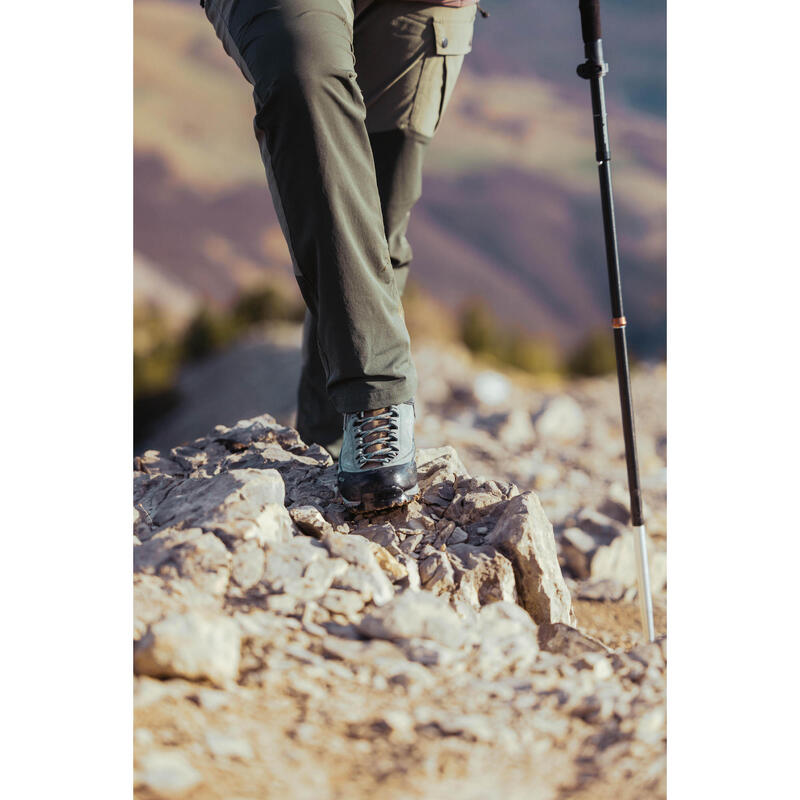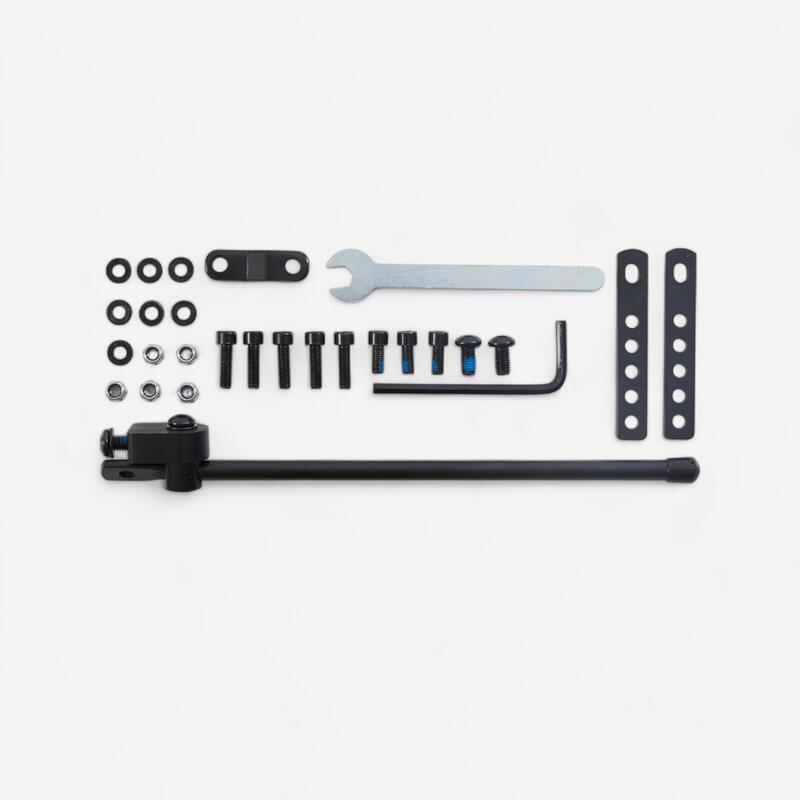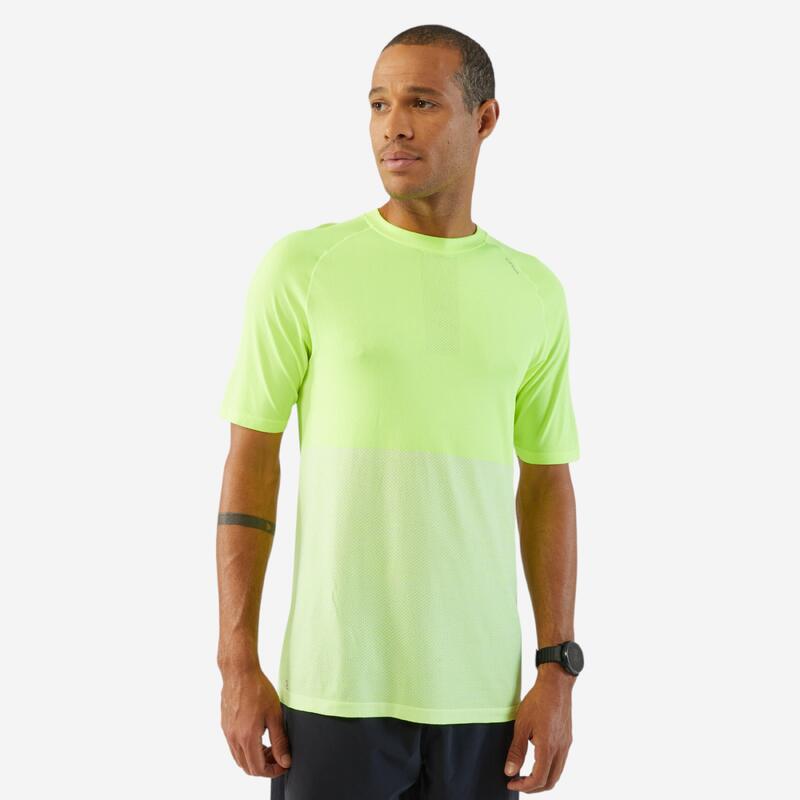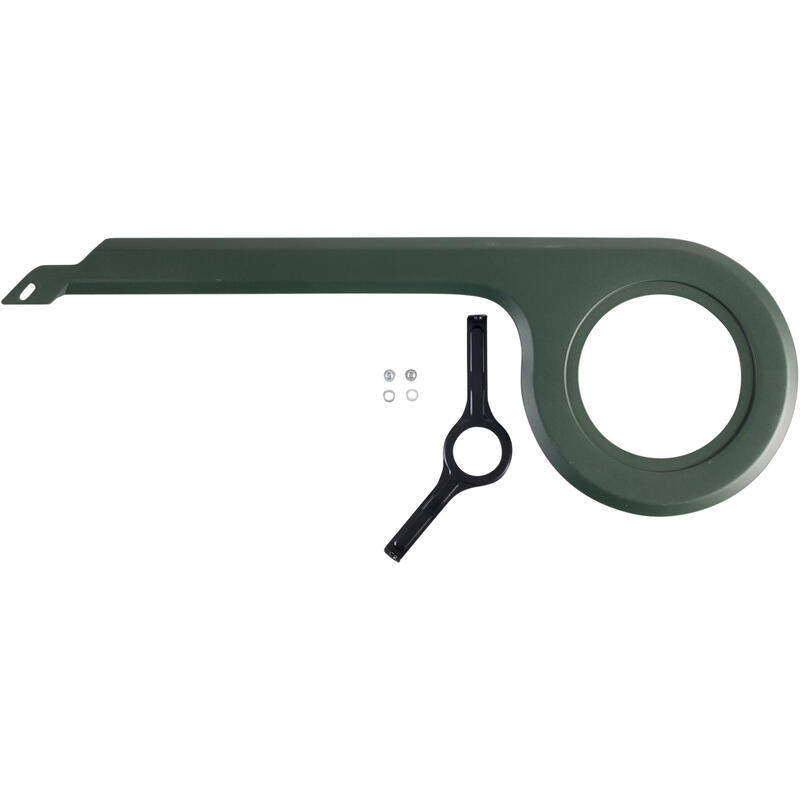Where are our trekking boots made?
These trekking boots are made in the European Union, in Romania, in a factory specialized in the production of trekking boots.
VIBRAM®. The grip and adherence of our soles
Our VIBRAM®-certified soles offer excellent grip on dry or wet off-road terrain, and on dirt or rock. In short, formidable!
Its notched tread will also give you the grip you need on wet and greasy terrain
"medium-width sole". The wider the sole, the more flexible it generally becomes. As a result, with this sole, walking remains comfortable on most paths without losing stability.
The waterproofing test carried out on this model
This shoe has been validated on the waterproofness test at 50,000 repeatable flexes, i.e. 20 km - 8 hours of walking in water up to mid-tide, which today guarantees an excellent level of waterproofness at shoe level.
--> Our evaluation indicates a level of 4 /5 which offers waterproofness for 8 hours of hiking in the rain.
Details of the tests carried out to evaluate the waterproofness of our shoes can be found a little further down in the specifications.
Increase the waterproofness of your footwear with a gaiter
Waterproof footwear is often compromised by the ingress of water through the upper part of the shoe.
--> To keep feet dry longer, we recommend using a waterproof gaiter or mini-gaiter to protect the upper part of the shoe from water ingress, but also from stones and sand.
Model perfectly suited to this model MT500 trekking gaiter black (8347880)
Extend the waterproofing of this textile model
Even if this model has a membrane (waterproof-breathable), it's advisable to use a re-waterproofing spray a few times a year, to restore the original water repellency and combat external stains.
--> The aim is to restore the water repellency of the outer material (water beads up and doesn't seep through). Each textile part is then sprayed, taking care not to forget the sewing threads (water loves sewing threads!!).
Waterproofing my textile shoes with a water-repellent reactivator
1 / Use a brush and/or sponge to clean; remove any earth or mud residues.
2 / Then leave to dry in the open air, away from a heat source.
3 / Shake the spray can SPRAY IMPERMEABILISANT / 5€
4 / Spray on the product from a distance of 25 cm
5 / Leave to work for at least 10 minutes. Caution: Do not rub or wipe off.
Highly resistant models
In addition to the various laboratory tests, these shoes have also been field-tested by keen trekkers during a 500 km RESISTANCE TEST MISSION, on trails such as the GR5 and the Canary Islands trekking trails. Watch the film of this test mission by clicking on this link: https://www.youtube.com/watch?v=L5o2h5v5RsU
LABORATORY TESTING
Laboratory tests are carried out to validate the following elements:
- hook and eye pull-out
- sole bonding
- toxicology
- UV resistance
- abrasion of sole and upper components
- accelerated ageing.
IS IT POSSIBLE TO USE CRAMPONS WITH THIS TREKKING BOOT?
This model of trekking boot allows the occasional use of STRAP CRAMPS ONLY. Its rigidity is sufficient for occasional use of strap crampons, while guaranteeing excellent walking comfort.
Choosing the right shoe size is a major challenge.
For hiking, don't hesitate to go one size larger than your usual shoe size, to ensure optimum comfort on the way down, and to prevent your toes from banging against the ground. Tip: keep your nails short and check that your lacing prevents your foot from slipping forward.
5 LEVELS OF WATERPROOFING
In the waterproof test, we test 5 levels of waterproofness:
2,000 flexes (approx. 4 km , 30 min walk)
10,000 flexes (approx. 10 km , 3 hours walk)
30,000 flexes (approx. 15 km , 6 hours walk)
50,000 flexes (approx. 20 km ,8 hours walk)
100,000 flexes (approx. >20 km , 24 hours walk)
WATERPROOF TEST / 100% WATERPROOF laboratory-validated
Our shoes are tested in the laboratory using two consecutive tests
Test 1 / We test the effectiveness of the membrane alone by immersing it in water under air pressure, simply checking for the absence of bubbles at the surface "like a punctured inner tube".
Test 2 / Using a mechanical arm to simulate walking, the entire shoe is half immersed in water and flexed thousands of times to check that the inside of the shoe remains dry and therefore waterproof.
BUYING ADVICE / HOW TO TRY ON YOUR SHOES?
To choose the right shoe:
1. Try on both shoes, standing up, with the socks you use for hiking.
2. Tighten the laces correctly
3. Check two important comfort points: heel seat and forefoot downhill.
4. Stand up to walk with your shoes on.
5. Try on several sizes and models.
6. Use your shoes gradually on your first hikes, to get them to fit properly.













